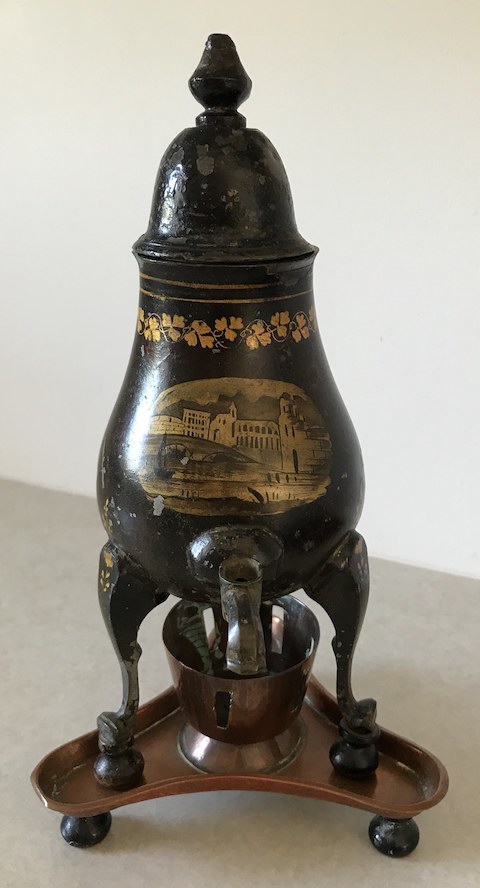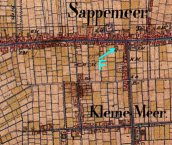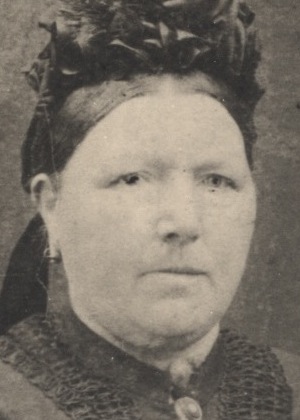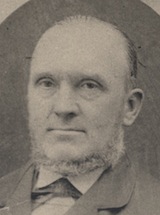|
The "Machinale Stoom-Schuierhoutenfabriek"
and "Houthandel" had a sketch of the outfit as letterhead
on their stationary.
The sketch shows the layout of the factory with its buildings
at the end of the 19th century.
| |
Sketch of the terrain of the wood works factory
of J.H. Jager te Sappemeer
(see the map above for the location in Sappemeer).
Situation mid 20st century.
The factory (F) was on the rear end of the land,
with separately on the canal the steam engine house.
Along the land was the canal where trees could be "watered".
The office (K) was on the canal.
The other long side had the open storage shed (L) for planks.
The residence (W) was on the Winschoterdiep.
In the rear of the house was a small separate living unit. (A).
|
The production of, e.g., the wood for brushes involved many steps.
Acquire trees, bring them to the factory and let them
"water" a while,
Then the stems are to be hauled on land to let them dry.
Saw the stem to planks (in the saw building) to the desired thickness,
cut the planks into smaller pieces,
then scrape them into the correct shape for the said brush,
polish the sides, and drill the holes for the brushes.
From where came the wood?
Jan Hendrik must have looked far afield.
From the youth memories of Kornelis ter Laan,
son of a farmer who had some years of hardship,
one can derive one way of procuring.
Those memories have been written in the Groningen dialect
and a relevant portion is given here in translation.
It relates an event in late 19th century.
As bad as this it had never been before.
Not even a cent left in the house.
Father had sold all our trees,
the beautiful poplars at the entrance of our farm,
the hedges on the field behind the house
and the entire row of trees around the orchard
and the alders on the garden side
that shielded us from the northerly winds.
It had all been so nice in summer, and in the winter too.
All gone.
Thirty guilders we received for the lot from the wood maker in Sappemeer;
there they make of it wooden parts for bowls and brooms
and other equiupment.
The wood had no value, they said, poplars and alders,
that was the poorest wood around, they said.
But still they make nice bowls and brushes and chairs and handles.
And on top father had to bring it himself.
And then all was bare, and it was unsightly, and we all would like to
no longer be here.
But that all was may be not that bad, because the trees would grow again.
Then also the cow has to go, said mother.
And on life on a farm (in het gronings):
Ik heb 't nog hail wel waiten, dat ons koustaal vol was: vair koìen, twij stalen van twij. En hou waarm dat't doar 's winters was. En din zat moeke te koumelken van strip-strap-strol, en wie speulden op kougaang.

|
[K. ter Laan, 2013.
The reminiscence on the wood (and the hardship) is called
"Nood - Eind januari 1889"; p.94.
K. ter Laan, born in 1871,
was the only child of the family that received higher education.
He went into politics and wrote much about Groningen.]
Jan had his office in a small building at the canal
from where he could oversee the entire factory yard.
It was situated halfway the house and the factory proper
(see map above: K).
Grietje made him coffee in a small "kraantjespot"
(a pewter vessel with heating unit below)
for his office, especially when he had business visitors.
On the photo from 1897
(see at son Johan)
of family and staff of the factory one sees also
the successors of the company, Johan Herman (op de foto nr 1),
ook Hendrik (foto, nr 16) en Roelof (foto, nr 15).
Jan died in 1900, Grietje in 1901.
After their death in 1901 a family photo has been made
(see at son Johan),
where the portraits of Grietje and Jan are included in the background.
It is from this large photo that the portraits of
Jan and Grietje have been taken and included here.
These portraits are perhaps from 10 years earlier.
Jan and Grietje were burried
in the graveyard of the cupola church in Sappemeer
(in the row with number 43-56).
Other family members have their grave there, too
(a.o. son Johan with wife Tallina).
To the ancestry JHJ & GHG.
With thanks to Han de Boer for the information from the book by K.ter Laan.
K. ter Laan, 2013. "As ik nou moar eerst wat verdain....",
edited by his granddaughter S.ter Laan;
Uitg. Noordboek, ISBN 978-9033003745.
|






